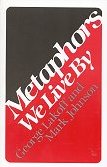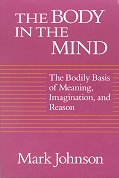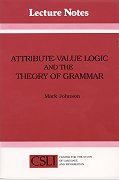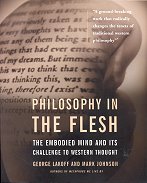thesis: Metaphor is not just a poetical way of speaking that can be ignored or paraphrased away if we so wish; it is deeply embedded in our language, culture, and the way we think, and hence affects how we experience and interact with the world and other people.
The book is crammed with claimed metaphors and example short phrases to back up the claims (a tiny selection is reproduced at the end here). The metaphors range from the obvious (ARGUMENT IS WAR), to ones that are so deeply embedded in our thought processes that it takes a little longer to appreciate the existence of a metaphor at all (MORE IS UP; LESS IS DOWN). The very number of examples provided goes a long way to supporting the thesis.
The authors argue that these truly are metaphors, and not just homonyms (words that coincidentally sound the same, such as bank for the side of a river and a place to keep money). They show that we can extend conventional use of a metaphor, usually poetically --- He prefers massive Gothic theories covered with gargoyles. If the metaphor were merely a coincidental homonym, we would not be able to do this. Also, when we use two metaphors simultaneously, we do so in a coherent manner, rather than arbitrarily.
Many of our deepest metaphors are based on our physical interaction with our environment: up/down, in-out, back-front. But even so, some of these deep metaphors are different in different cultures:
The first part of the book discusses metaphor in language; the second shows this has a profound impact on philosophy, which classically tends to ignore or downplay metaphor. A phrase like the fog bank is in front of the mountain can be understood only by assuming that
- a fog bank is an object [watching time-lapse films of clouds is a good way to disabuse yourself of the idea that a cloud is an object with a well-defined spatial and temporal extent]
- a mountain is an object
- a mountain has a front
- the mountain's front is oriented towards the (implicit) observer
The latter part of the book is an explanation of why the new metaphorical experientialism is a better philosophy than either objectivism or subjectivism. Now we can realise that we are structuring our understanding by using just one of many possible metaphors, and maybe chose to use a different one (AN ARGUMENT IS A JOURNEY, rather than ARGUMENT IS WAR, say).
As well as detailed accounts of metaphor, there are some passing references to the way people carve up and classify the world: prototypical rather than hierarchical (robins and sparrows are prototypical birds, ostriches and penguins are not) and context-dependent (I may classify a bean-bag as a chair in some contexts but not in others). Lakoff goes into this more deeply in his fascinating later book Women, Fire, and Dangerous Things.
A selection of metaphors
- ARGUMENT IS WAR
- He attacked my argument -- I've never won an argument
- ARGUMENTS/THEORIES ARE BUILDINGS
- The argument will fall apart -- We need to buttress the theory with solid arguments
- AN ARGUMENT IS A JOURNEY
- We have set out to prove... -- We have arrived at a disturbing conclusion
- TIME IS MONEY
- You're wasting my time -- He's living on borrowed time
- TIME IS A MOVING OBJECT
- The time for action has arrived -- Time flies
- LOVE IS A JOURNEY
- Look how far we've come -- We can't turn back now
- LOVE IS MADNESS
- He's gone mad over her -- I'm just wild about Harry
- LOVE IS WAR
- He is known for his conquests -- He won her hand -- She is besieged by suitors
- LABOUR IS A RESOURCE
- MORE IS UP; LESS IS DOWN
- My income rose last year -- He is underage -- Turn the heating down
- HAPPY IS UP; SAD IS DOWN



